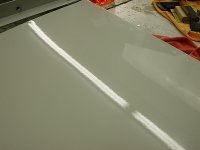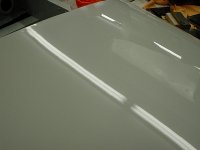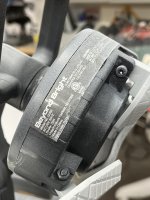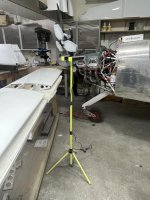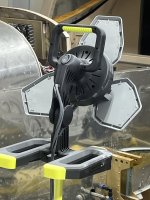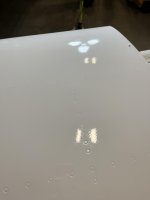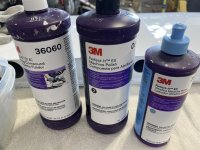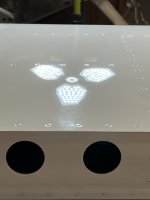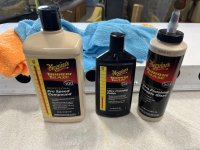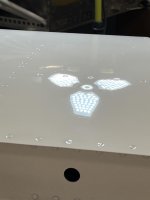I started cutting and buffing my paint this week and hadn't really settled on the process to use even after reading some of the excellent posts on here.
So, I did an experiment today. I wanted to compare two rubbing compounds
1) 3M Perfect-It 36060 and
2) Meguiar's 100
The photo below shows the result after first wet sanding with 1500 Trizact then 3000 Trizact
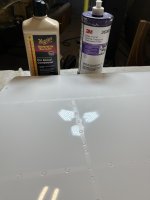
It's hard to see in the photo, but with just one pass of the buffer, the Meguiar's is slightly clearer. It feels significantly grittier than the 3M, also. Makes sense it would cut faster. So, Meguiar's gets the prize. The 3M would get to the same result, but it would take more passes, and time.
Then, I decided to see if cutting with 5000 Trizact made much difference over just 3000 Trizact. The photo below shows the result.
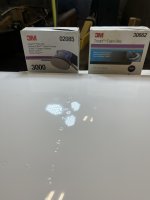
The 5000 Trizact makes a big difference. That reflection is my new LED work light from Home Depot. Worth every penny! All the scratches and defects are really obvious with this light. I will use them for the rest of my painting as all my mistakes regarding orange peel and runs came from inadequate light.
So, I have decided my process for finishing my paint will be:
1) First cut with 1500 Trizact wet
2) Second and third cuts with 3000 and 5000 Trizact wet
3) Meguiar's 100
4) Meguiar's 210
5) Meguiar's 310
6) Gtechniq Crystal Light
7) Gtechniq EXO
So, I did an experiment today. I wanted to compare two rubbing compounds
1) 3M Perfect-It 36060 and
2) Meguiar's 100
The photo below shows the result after first wet sanding with 1500 Trizact then 3000 Trizact

It's hard to see in the photo, but with just one pass of the buffer, the Meguiar's is slightly clearer. It feels significantly grittier than the 3M, also. Makes sense it would cut faster. So, Meguiar's gets the prize. The 3M would get to the same result, but it would take more passes, and time.
Then, I decided to see if cutting with 5000 Trizact made much difference over just 3000 Trizact. The photo below shows the result.

The 5000 Trizact makes a big difference. That reflection is my new LED work light from Home Depot. Worth every penny! All the scratches and defects are really obvious with this light. I will use them for the rest of my painting as all my mistakes regarding orange peel and runs came from inadequate light.
So, I have decided my process for finishing my paint will be:
1) First cut with 1500 Trizact wet
2) Second and third cuts with 3000 and 5000 Trizact wet
3) Meguiar's 100
4) Meguiar's 210
5) Meguiar's 310
6) Gtechniq Crystal Light
7) Gtechniq EXO
Last edited:



